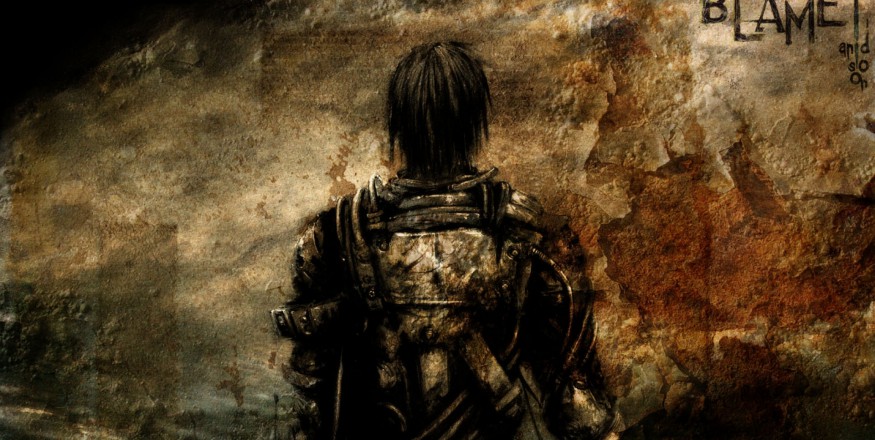The Lesser Key of Solomon, also known as Clavicula Salomonis Regis or Lemegeton, is an anonymous grimoire (or spell book) on demonology. It was compiled in the mid-17th century, mostly from materials a couple of centuries older. It is divided into five books—the Ars Goetia, Ars Theurgia-Goetia, Ars Paulina, Ars Almadel, and Ars Notoria.1144Please respect copyright.PENANAsR3ktxKeZM
Ars Goetia1144Please respect copyright.PENANAqjHu3K31PY
The most obvious source for the Ars Goetia is Johann Weyer's Pseudomonarchia Daemonum in his De praestigiis daemonum. Weyer does not cite, and is unaware of, any other books in the Lemegeton, indicating that the Lemegeton was derived from his work, not the other way around. The order of the spirits was changed between the two, four additional spirits were added to the later work, and one spirit (Pruflas) was omitted. The omission of Pruflas, a mistake that also occurs in an edition of Pseudomonarchia Daemonum cited in Reginald Scot's The Discoverie of Witchcraft, indicates that the Ars Goetia could not have been compiled before 1570. Indeed, it appears that the Ars Goetia is more dependent upon Scot's translation of Weyer than Weyer's work in itself. Additionally, some material was used from Heinrich Cornelius Agrippa's Three Books of Occult Philosophy, the Heptameron by pseudo-Pietro d'Abano, and the Magical Calendar.
Weyer's Officium Spirituum, which is likely related to a 1583 manuscript titled The Office of Spirits, appears to have ultimately been an elaboration on a 15th-century manuscript titled Le Livre des Esperitz (of which 30 of its 47 spirits are nearly identical to spirits in the Ars Goetia).
In a slightly later copy made by Thomas Rudd, this portion was labelled "Liber Malorum Spirituum seu Goetia", and the seals and demons were paired with those of the 72 angels of the Shemhamphorasch, who were intended to protect the conjurer and control the demons he summoned. The angelic names and seals were derived from a manuscript by Blaise de Vigenère, whose papers were also used by Samuel Liddell MacGregor Mathers in his works for the Hermetic Order of the Golden Dawn. Rudd may have derived his copy of Liber Malorum Spirituum from a now-lost work by Johannes Trithemius, who taught Agrippa, who in turn taught Weyer.
This portion of the work was later translated by S. L. MacGregor Mathers and published by Aleister Crowley under the title The Book of the Goetia of Solomon the King. Crowley added some additional invocations previously unrelated to the original work, as well as essays describing the rituals as psychological exploration instead of demon summoning.1144Please respect copyright.PENANAHkXtDQBESd
The Seventy-Two Demons
The demons' names (given below) are taken from the Ars Goetia, which differs in terms of number and ranking from the Pseudomonarchia Daemonum of Weyer. As a result of multiple translations, there are multiple spellings for some of the names, which are given in the articles concerning them.
1) King Bael1144Please respect copyright.PENANA8brfde5XWI
2) Duke Agares1144Please respect copyright.PENANADZ8NlS8gT0
3) Prince Vassago1144Please respect copyright.PENANA33XWsre5PD
4) Marquis Samigina1144Please respect copyright.PENANATFGWGHlsdn
5) President Marbas1144Please respect copyright.PENANAGys9pfyn54
6) Duke Valefor1144Please respect copyright.PENANApDvw1zQIxH
7) Marquis Amon1144Please respect copyright.PENANAdDxAhNUqJO
8) Duke Barbatos1144Please respect copyright.PENANAaMke2l5Wrw
9) King Paimon1144Please respect copyright.PENANAJrLjTmLEbU
10) President Buer1144Please respect copyright.PENANAaQfGbEiuf8
11) Duke Gusion1144Please respect copyright.PENANA0CUGpsJpOD
12) Prince Sitri1144Please respect copyright.PENANAG2oOQqrdIV
13) King Beleth1144Please respect copyright.PENANA3qjhivLXWz
14) Marquis Leraje1144Please respect copyright.PENANAiRxfmRCBcu
15) Duke Eligos1144Please respect copyright.PENANAlujr6Vwcpa
16) Duke Zepar1144Please respect copyright.PENANAD8Chpz997n
17) Count/President Botis1144Please respect copyright.PENANA13PZznUpor
18) Duke Bathin1144Please respect copyright.PENANASnuy7NiiZb
19) Duke Sallos1144Please respect copyright.PENANAD7XRt5xnJF
20) King Purson1144Please respect copyright.PENANAChZPtMFYFU
21) Count/President Marax1144Please respect copyright.PENANAE28yMaBsnU
22) Count/Prince Ipos1144Please respect copyright.PENANALSRQsN7sME
23) Duke Aim1144Please respect copyright.PENANAhc9EGDDG0u
24) Marquis Naberius1144Please respect copyright.PENANAubvlRtt5hk
25) Count/President Glasya-Labolas1144Please respect copyright.PENANAbZKMSdjPYK
26) Duke Buné1144Please respect copyright.PENANAaYZK2LTqVT
27) Marquis/Count Ronové1144Please respect copyright.PENANA2r4om0DzJQ
28) Duke Berith1144Please respect copyright.PENANAy7jaBKWDro
29) Duke Astaroth1144Please respect copyright.PENANAcL8E9aw2YY
30) Marquis Forneus1144Please respect copyright.PENANAqigSuC9eU1
31) President Foras1144Please respect copyright.PENANAPgCET45ih5
32) King Asmoday1144Please respect copyright.PENANALfucER61Fc
33) Prince/President Gäap1144Please respect copyright.PENANALTJ8Kmtm3X
34) Count Furfur1144Please respect copyright.PENANAmEbpG5tYvK
35) Marquis Marchosias1144Please respect copyright.PENANAUGRm5oSlFa
36) Prince Stolas1144Please respect copyright.PENANAReKQSHEfen
37) Marquis Phenex1144Please respect copyright.PENANAL2Md3yeEkP
38) Count Halphas1144Please respect copyright.PENANA9aSRcOmTO0
39) President Malphas1144Please respect copyright.PENANAV1MDopgeD1
40) Count Räum1144Please respect copyright.PENANAC03aWY3ymd
41) Duke Focalor1144Please respect copyright.PENANAIAQ6lJ1Qlj
42) Duke Vepar1144Please respect copyright.PENANA1qjkgCHMRG
43) Marquis Sabnock1144Please respect copyright.PENANAlJa9YK20CF
44) Marquis Shax1144Please respect copyright.PENANAaNLwCB7Gbv
45) King/Count Viné1144Please respect copyright.PENANASqNHrEPJLv
46) Count Bifrons1144Please respect copyright.PENANAWahrCBFYq0
47) Duke Vual1144Please respect copyright.PENANA3yDgddEn5h
48) President Haagenti1144Please respect copyright.PENANAz2tKxtVte8
49) Duke Crocell1144Please respect copyright.PENANAc0O4s3CCY0
50) Knight Furcas1144Please respect copyright.PENANAMaGTYozulH
51) King Balam1144Please respect copyright.PENANAuh62Elmude
52) Duke Alloces1144Please respect copyright.PENANA5y69ZzxVZN
53) President Caim1144Please respect copyright.PENANAjWpdtCt7h5
54) Duke/Count Murmur1144Please respect copyright.PENANAUBMP16nnTW
55) Prince Orobas1144Please respect copyright.PENANAkWfIcRBxp5
56) Duke Gremory1144Please respect copyright.PENANAwl1Ju2sHzI
57) President Ose1144Please respect copyright.PENANAhPW4X7OBoj
58) President Amy1144Please respect copyright.PENANAfq7wQyT0wV
59) Marquis Orias1144Please respect copyright.PENANAS1muTezq2N
60) Duke Vapula1144Please respect copyright.PENANArXvtDEyIig
61) King/President Zagan1144Please respect copyright.PENANAZHpQzuVbls
62) President Valac1144Please respect copyright.PENANAYPy3we092V
63) Marquis Andras1144Please respect copyright.PENANAmF1UFpapsv
64) Duke Flauros1144Please respect copyright.PENANAmWlfwwsKbc
65) Marquis Andrealphus1144Please respect copyright.PENANA9xckwmklHf
66) Marquis Kimaris1144Please respect copyright.PENANAEuzeavGUyL
67) Duke Amdusias1144Please respect copyright.PENANAGGmjg27gs2
68) King Belial1144Please respect copyright.PENANAIe13lLFoV9
69) Marquis Decarabia1144Please respect copyright.PENANAsIQgyyFVJB
70) Prince Seere1144Please respect copyright.PENANA3yg1PM2VkG
71) Duke Dantalion1144Please respect copyright.PENANAKZHTpSQI9V
72) Count Andromalius
The demons are described as being commanded by four kings of the cardinal directions: Amaymon (East), Corson (West), Ziminiar (North), and Gaap (South). A footnote in one variant edition instead lists them as Oriens or Uriens, Paymon or Paymonia, Ariton or Egyn, and Amaymon or Amaimon, alternatively known as Samael, Azazel, Azael, and Mahazael (purportedly their preferred rabbinic names).[10] Agrippa's Occult Philosophy lists the kings of the cardinal directions as Urieus (East), Amaymon (South), Paymon (West), and Egin (North); again providing the alternate names Samuel (i.e. Samael), Azazel, Azael, and Mahazuel. The Magical Calendar lists them as Bael, Moymon, Poymon, and Egin, though Peterson notes that some variant editions instead list '"Asmodel in the East, Amaymon in the South, Paymon in the West, and Aegym in the North"; "Oriens, Paymon, Egyn, and Amaymon"; or "Amodeo [sic] (king of the East), Paymon (king of the West), Egion (king of the North), and Maimon."1144Please respect copyright.PENANAZ2WsTSMsJc
Ars Theurgia Goetia1144Please respect copyright.PENANAEFx4vpO994
The Ars Theurgia Goetia mostly derives from Trithemius's Steganographia, though the seals and order for the spirits are different due to corrupted transmission via manuscript. Rituals not found in Steganographia were added, in some ways conflicting with similar rituals found in the Ars Goetia and Ars Paulina. Most of the spirits summoned are tied to points on a compass, four Emperors tied to the cardinal points (Carnesiel in the East, Amenadiel in the West, Demoriel in the North and Caspiel in the South), sixteen Dukes tied to cardinal points, inter-cardinal points, additional directions between those. There are an additional eleven Wandering Princes, totaling thirty one spirit leaders who each rule several to a few dozen spirits.1144Please respect copyright.PENANAqhLosIXQWD
1144Please respect copyright.PENANAVjsLi4prdx
Ars Paulina1144Please respect copyright.PENANAxBjo8iF9OP
Derived from book two of Trithemius's Steganographia and from portions of the Heptameron, but purportedly delivered by Paul the Apostle instead of (as claimed by Trithemius) Raziel. Elements from The Magical Calendar, astrological seals by Robert Turner's 1656 translation of Paracelsus's Archidoxes of Magic, and repeated mentions of guns and the year 1641 indicate that this portion was written in the later half of the seventeenth century. Traditions of Paul communicating with heavenly powers are almost as old as Christianity itself, as seen in some interpretations of 2 Corinthians 12:2-4 and the apocryphal Apocalypse of Paul. The Ars Paulina is in turn divided into two books, the first detailing twenty-four angels aligned with the twenty-four hours of the day, the second (derived more from the Heptameron) detailing the 360 spirits of the degrees of the zodiac.1144Please respect copyright.PENANAHI58KDSxZd
Ars Almadel1144Please respect copyright.PENANAhwYOVuVW9l
Mentioned by Trithemius and Weyer, the latter of whom claimed an Arabic origin for the work. A 15th-century copy is attested to by Robert Turner, and Hebrew copies were discovered in the 20th century. The Ars Almadel instructs the magician on how to create a wax tablet with specific designs intended to contact angels via scrying.1144Please respect copyright.PENANApv98SrnVkO
Ars Notoria1144Please respect copyright.PENANARlWI6uMdlX
The oldest known portion of the Lemegeton, the Ars Notoria (or Notory Art) was first mentioned by Michael Scot in 1236 (and thus was written earlier). The Ars Notoria contains a series of prayers (related to those in The Sworn Book of Honorius) intended to grant eidetic memory and instantaneous learning to the magician. Some copies and editions of the Lemegeton omit this work entirely; A. E. Waite ignores it completely when describing the Lemegeton. It is also known as the Ars Nova.1144Please respect copyright.PENANAFjeHI1qnkh
1144Please respect copyright.PENANAUoTom8V8eq
It has also been said to be the origin of Pandora's box and where the seven deadly sins were born.
1 Gula (gluttony)1144Please respect copyright.PENANA2V1GG4OKO3
2 Luxuria (lust, fornication)1144Please respect copyright.PENANAaIG05yywMu
3 Avaritia (avarice/greed)1144Please respect copyright.PENANAmQEuDRZsoo
4 Superbia (pride, hubris)1144Please respect copyright.PENANAFihV5dKZkN
5 Invidia (Envy)1144Please respect copyright.PENANAz4emnVdNW5
6 Ira (wrath)1144Please respect copyright.PENANAn0s9YJHwNn
7 Acedia (sloth)1144Please respect copyright.PENANAlIUgjmZGuM
If you look any further into it, beware your surrounding... You will uncover, the truth.
ns216.73.216.65da2





















